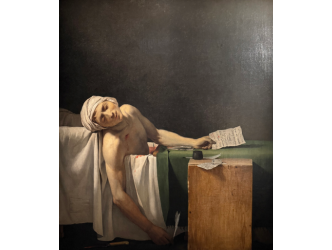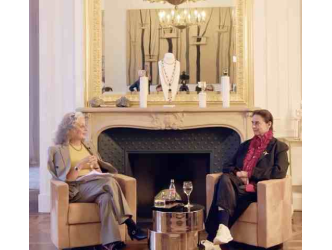Generous trustees
In the United States, unlike in France, museums are rarely funded by the public sector. To attract ever greater private generosity, they have developed an elaborate system of official recognition for their major patrons. Over time, the most generous among these so-called “trustees” or board members have formed a true aristocracy of art philanthropy. Every city has its great names, collectors who enter history by donating vast ensembles of works and helping shape their institutions. In New York, one family stands out above all: the Lauders. The founder of the eponymous cosmetics empire, Estée Lauder, had two sons, Ronald (born 1944) and Leonard (1933–2025), both of whom profoundly marked the city’s cultural life.
Neue Galerie
The younger, Ronald, an admirer of early twentieth-century Austrian art, went so far as to create his own museum, the Neue Galerie, inaugurated in 2001. Among its masterpieces is Gustav Klimt’s dazzling 1907 Portrait of Adele Bloch-Bauer I with a gilded background. Acquired privately in 2006 for 135 million dollars, the painting instantly elevated Klimt’s market to the level of other modern legends such as Van Gogh, Picasso and Monet. At the time, it was the highest price ever paid for a painting.
Adam Weinberg
Leonard, the elder brother, left his mark on at least two New York institutions. For 34 years he sat on the board of the Whitney Museum of American Art. Adam Weinberg, who directed the Whitney for two decades, recalls: “He played a major role, above all as the leading contributor to the creation of the new downtown museum.” In 2008 Lauder made a donation of 131 million dollars to the Whitney. And in 2013, he announced that upon his death, his collection of 78 Cubist paintings, then valued at 1.1 billion dollars, would go to the Metropolitan Museum of Art. According to Forbes, this represented 13.5 percent of his total net worth. Weinberg adds: “Leonard Lauder was the kind of man who spoke to everyone in the museum, from the director to the guards. In art he had two lives: his public engagement with the Whitney and his private delight, at home, in his Cubist collection.”
400 million dollars
On 18 November 2025, Sotheby’s will auction what had not already been given to New York’s museums: 24 works with a combined estimate of around 400 million dollars. The entire group is under guarantee(1). Private dealer Franck Giraud, who knew Leonard Lauder well, describes him as “a true gentleman, with a fully legitimate place in the pantheon of great American donors. His artistic choices were rigorous and guided by conviction. In Cubism, he confined himself to just four names: Picasso, Juan Gris, Fernand Léger and Georges Braque. He built a museum-quality collection in collaboration with art historian Emily Braun, a professor at Hunter College. He also understood that Matisse’s bronzes were a key expression in the history of modern art.”
Gustav Klimt
More unexpectedly, and far removed from Cubism, the stars of the November 18 sale are three works by the Austrian master of decorative modernism, Gustav Klimt. “His Klimt acquisitions began in the late 1970s,” explains Helena Newman, head of Impressionist and Modern Art at Sotheby’s. “The Cubist obsession came later.”
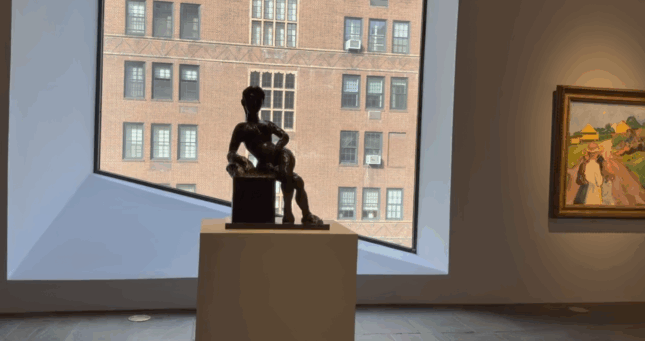
Henri Matisse
New headquarters
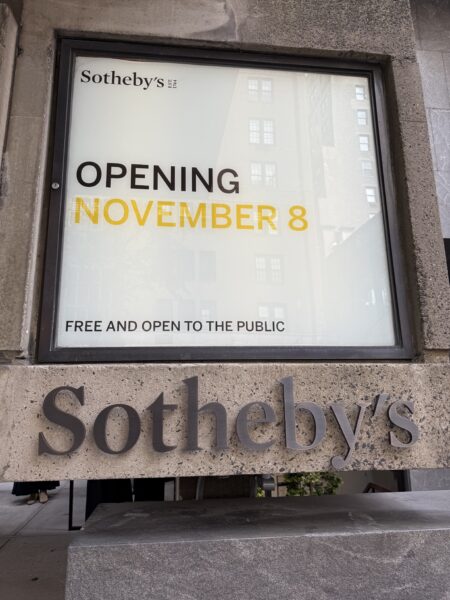
The timing of the Lauder sale is ideal for Sotheby’s, which is inaugurating its new Manhattan headquarters at 945 Madison Avenue. The building is one of New York’s modernist landmarks, designed by Marcel Breuer in 1966 to house the Whitney Museum, which relocated in 2015 to the Meatpacking District. Sotheby’s commissioned the Swiss architects Herzog & de Meuron to adapt it to the needs of an auction house. Breuer’s elegant Brutalist spirit remains intact, with its mix of wood and concrete, its monumental elevators and its iconic trapezoidal window that defines the façade.
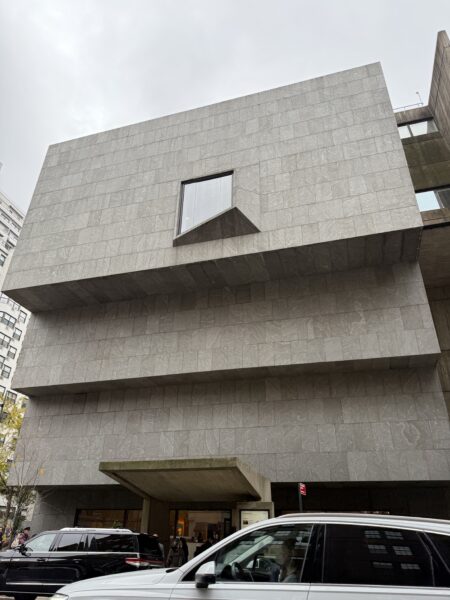
Quirk of fate
By a quirk of fate, the collection of one of the Whitney’s greatest benefactors will now be dispersed within the very building he so admired. Leonard Lauder once said: “Like so many architecture lovers, I believe the Whitney and the Breuer building are one.” It is here that he receives his final tribute.
Elisabeth Lederer… and her mother
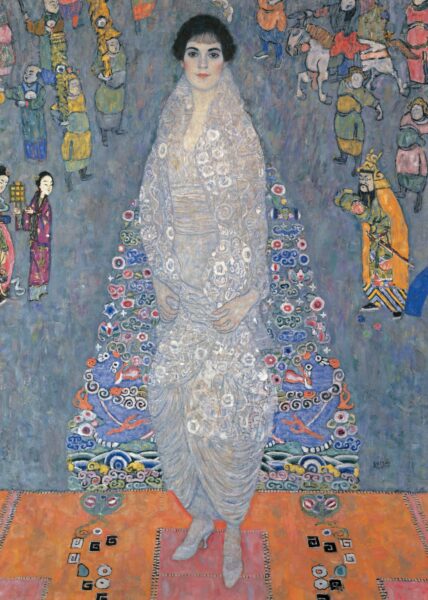
Gustav Klimt
The star lot of the Lauder sale is Portrait of Elisabeth Lederer (1914–16), estimated at around 150 million dollars. The sitter, daughter of Klimt’s great patrons, appears enveloped in a swirl of multicoloured flowers, a dreamlike vision set against a blue background decorated with Chinese motifs. As an intriguing echo, the Metropolitan Museum is currently showing, in its permanent galleries, Klimt’s ethereal 1899 Portrait of Serena Pulitzer, the model’s mother.
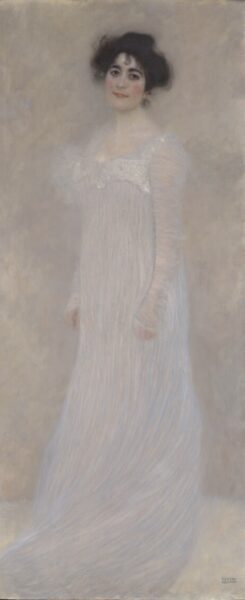
Gustav Klimt at The Met
Klimt Landscapes
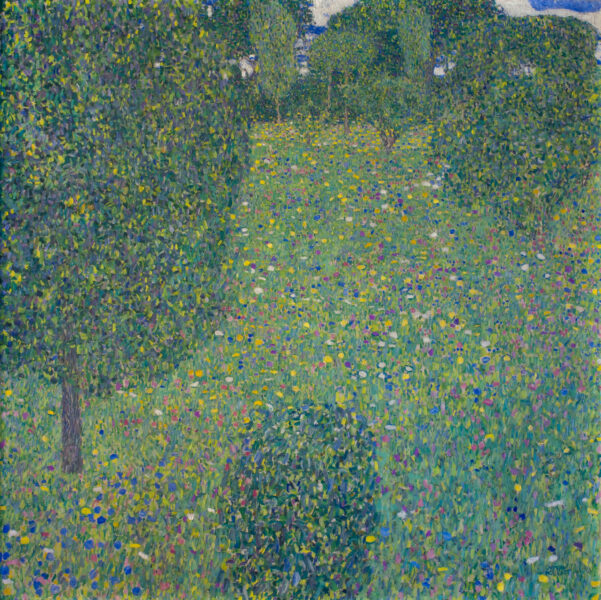
The Lauder collection also includes two Klimt landscapes, both immersed in lush green tones and intricate vegetation. Blumenwiese (Flower Meadow, 1908) carries an estimate of 80 million dollars, while Waldhag bei Unterach am Attersee (Wooded Edge near Unterach on Lake Attersee, 1916), believed to be Klimt’s final landscape, is valued at 70 million dollars.
Helena Newman
Klimt’s market has risen dramatically in recent years. In 2016 another Portrait of Adele Bloch-Bauer (1912) was reportedly sold privately by television star Oprah Winfrey to a Chinese collector for around 150 million dollars; she had acquired it in 2006 for 87.9 million. At auction, the record stands at 108.7 million (Artprice, 2023) for a floral, bird-filled portrait from 1917–18. At such a level, for an artist of immense appeal and with such a prestigious provenance, the notion of an art-market slowdown seems irrelevant. “The Portrait of Elisabeth Lederer is one of the masterpieces of the twentieth century,” says Helena Newman. “To set the estimate, we looked at artists of comparable stature. All the conditions are in place for an exceptional sale.”
Six Matisse bronzes
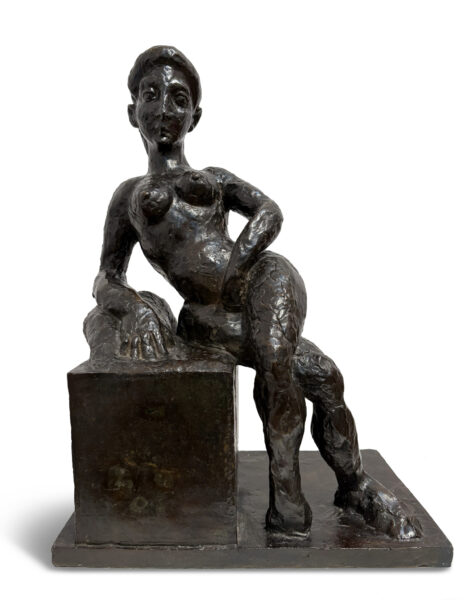
Henri Matisse
The Lauder collection also features six Matisse bronzes. Although best known as a master of colour, Matisse’s sculptural work occupies a smaller but essential place in his oeuvre. According to the site of the Musée Matisse in Nice, he created only 72 bronzes. This is the largest group of Matisse sculptures ever offered at auction. The top-valued piece, Figure décorative (1908), estimated at 12 million dollars, depicts a lanky nude combining flexibility with mass. All curves and soft volumes, she strikes a modest pose. The last Figure décorative sold at auction dates from 2001, when it fetched 12.6 million dollars, a sign that Sotheby’s remains cautious on estimates here, unlike with Klimt.
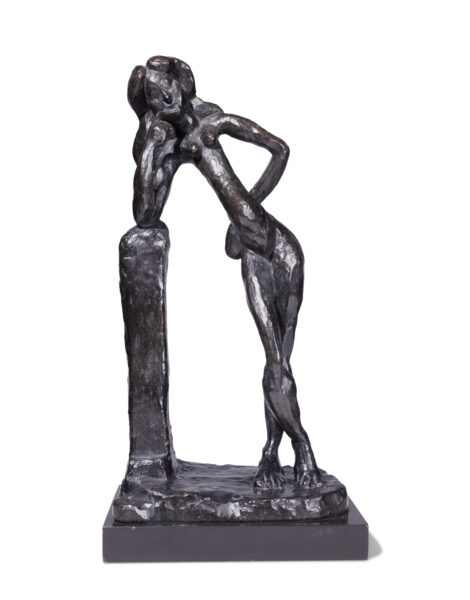
Henri Matisse
Long line on Madison Avenue
On the Saturday of Sotheby’s Breuer-building inauguration, a long line formed on Madison Avenue as visitors queued to see the legendary collection of this great New York philanthropist. No one seems anxious about the market’s response to the Lauder collection, which, in any case, is fully guaranteed.
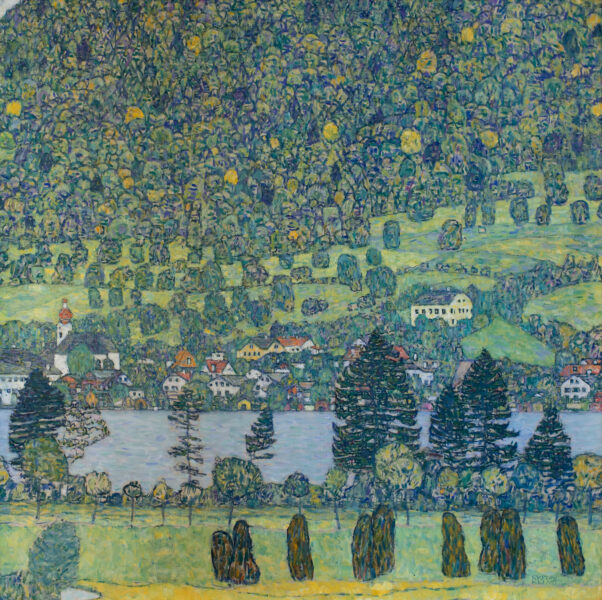
Gustav Klimt
Buying a fragment of the Lauder collection is like claiming a small share of its legend.
(1) A global, undisclosed guarantee was agreed between Sotheby’s and the sellers, ensuring them a fixed payment regardless of the sale’s outcome. Subsequently, but still before the auction, Sotheby’s resells, lot by lot, portions of this guarantee to third parties who may take a financial interest in the results.
Support independent news on art.
Your contribution : Make a monthly commitment to support JB Reports or a one-off contribution as and when you feel like it. Choose the option that suits you best.
Need to cancel a recurring donation? Please go here.
The donation is considered to be a subscription for a fee set by the donor and for a duration also set by the donor.



